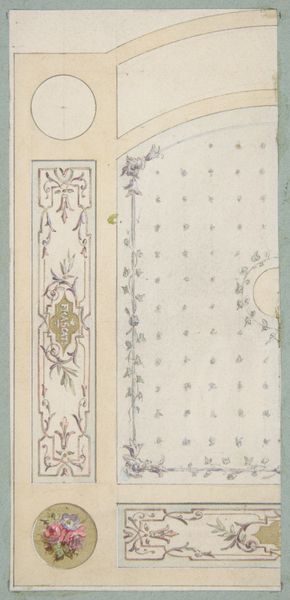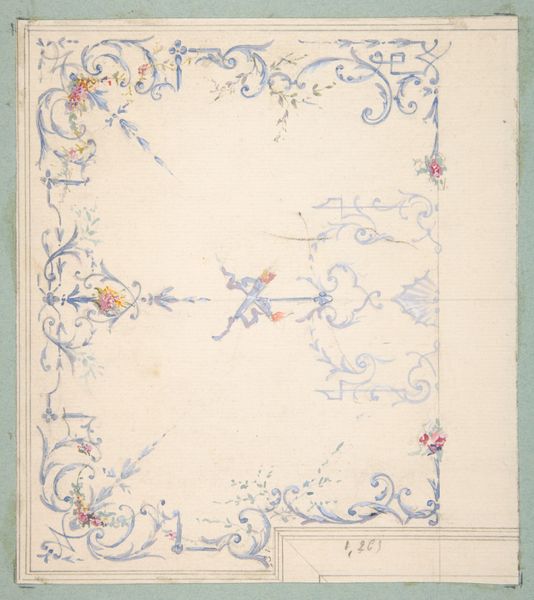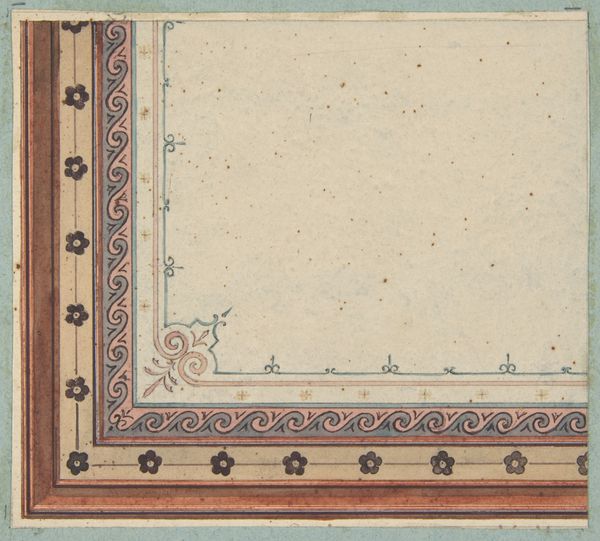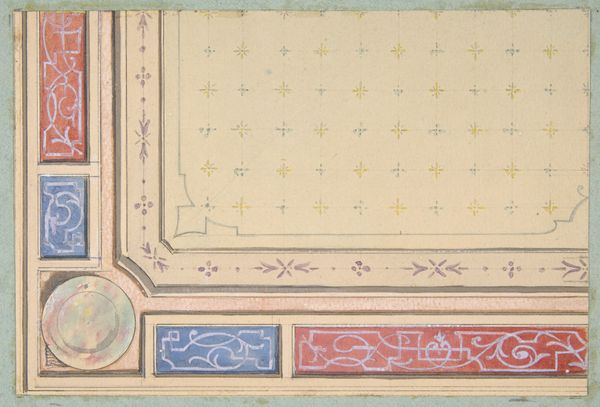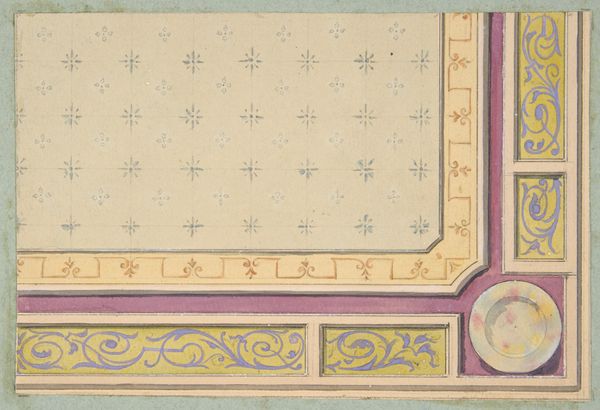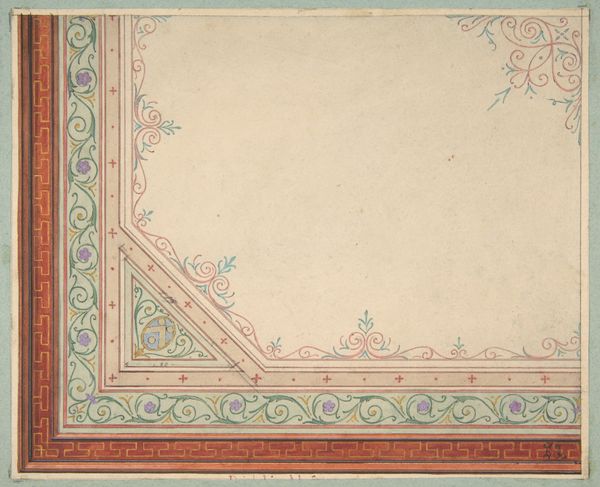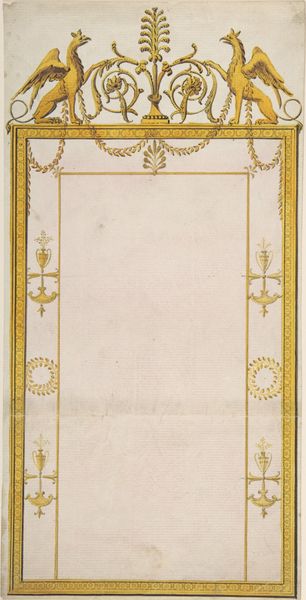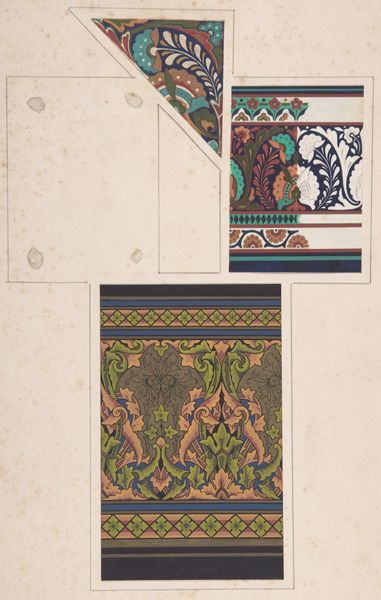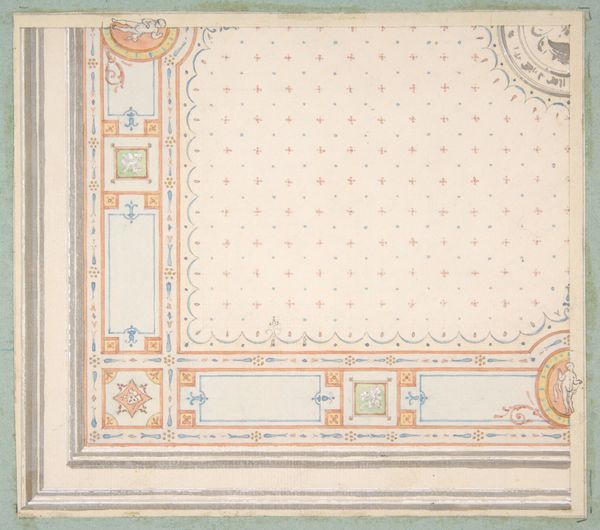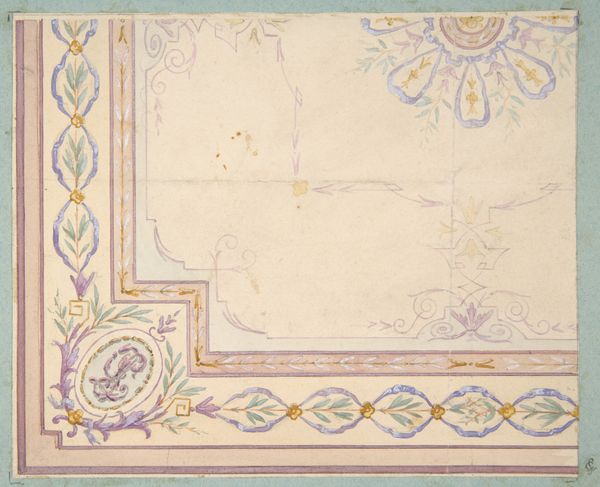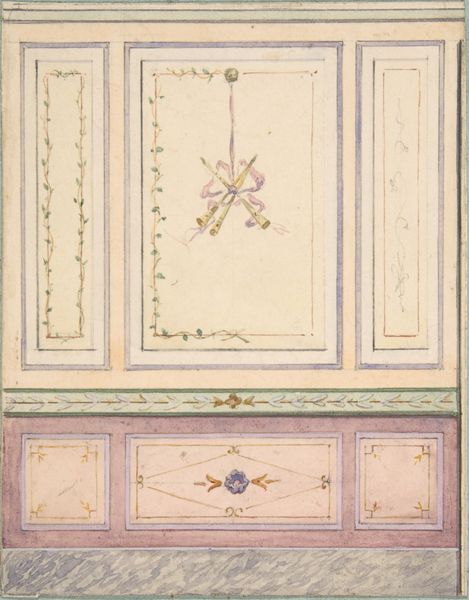
Pompeiian Design for Paneling 1850 - 1900
0:00
0:00
Dimensions: 12 x 10.5 in. (30.5 x 26.7 cm)
Copyright: Public Domain
Editor: This watercolour and pencil drawing, titled "Pompeiian Design for Paneling", comes to us from sometime between 1850 and 1900 and is currently housed at the Metropolitan Museum of Art. The geometric shapes and meander patterns give it such a clean and calming aesthetic, but the symbolic references elude me. How do you interpret this design? Curator: It is fascinating to see how classical motifs persisted and were reinterpreted throughout the 19th century. The meander pattern, for instance, is a powerful symbol associated with eternity and the cyclical nature of life, borrowed from ancient Greece. It is quite literally a labyrinth of cultural associations! Editor: So, even in a seemingly decorative piece, there’s a deeper intention? Is it always the case? Curator: Often, yes! Even the placement of these repeating patterns isn't arbitrary. Notice how they frame the space; like a symbolic protection. The sun emblem and other flourishes are adding to the composition. How does it influence the psychological impact of the design? Editor: I guess I see it creating a sense of order. Like the patterns are there to represent something greater that might keep us from going crazy. But why "Pompeiian?" Curator: Pompeii, rediscovered in the 18th century, triggered a Neoclassical frenzy, didn’t it? It offered direct access to the daily lives and aesthetics of the Roman Empire, thus the constant revival. Editor: It’s incredible to think about how this drawing is part of this long chain of cultural memory! Thanks! Curator: And think about how we continue to reinvent those motifs! This design really encapsulates cultural continuity through repeated symbolic vocabulary.
Comments
No comments
Be the first to comment and join the conversation on the ultimate creative platform.
